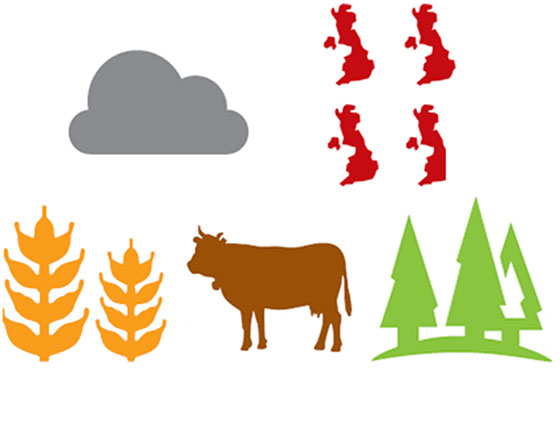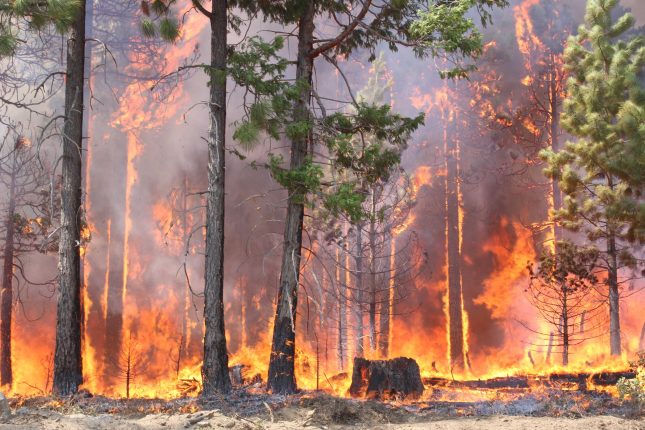
The climate pact approved in Paris Saturday represents a huge historic step in re-imagining a fossil-free future for our planet.
We consider it nothing short of amazing that 195 countries around the world—including oil-exporting nations—agreed to keep global temperature rise well below 2 degrees Celsius and, to the surprise of many, went even further by agreeing to pursue efforts to limit the increase to 1.5 degrees above pre-industrial levels.
These bold moves suggest an end to fossil fuel by 2050. That is within 35 years—well within many of our lifetimes. In 35 years, my 14-year-old son will be my age. Just think, many people still can easily remember what happened 35 years ago: Jimmy Carter was unseated by Ronald Reagan; the summer Olympics in Moscow were boycotted by the U.S., Japan, West Germany, China, among other nations; John Lennon was killed; and the Empire Strikes Back debuted on movie screens.
So how ambitious is this vision of our world 35 years from now? U.S. Secretary of State John Kerry captured the boldness of it Thursday when he said, “Our aim can be nothing less than a steady transformation of the global economy.”
Of course, this is not going to happen automatically. Through the agreement, 190 nations acknowledged this transformation is the desired goal. Yet, science tells us that the pledges submitted by each nation are projected to result in a temperature rise of between 3 and 7 degrees Celsius, exceeding the 2-degree limit or “global handrail” acknowledged by the agreement. We are glad that the final agreement requires countries to return every five years with new emission reduction targets. Whether this essential requirement will be sufficient to catalyze more action remains to be seen.
It’s worth noting, however, that the pledges submitted by nations were submitted before many new commitments and developments were announced at COP21, which also give us more reason to be optimistic. Those developments include:
- The largest ever multibillion-dollar clean energy fund announced by Microsoft founder Bill Gates at the beginning of the COP21.
- The launch by Indian Prime Minister Narendra Modi and French Prime Minister FrançoisHollande of a game-changing international solar alliance of 120 countries and major corporations.
- Such investments in clean energy come on top of the fact that the costs of wind and solar energy already have come down far quicker than originally imagined.
- New research showing a projected 0.6 percent decline in global emissions this year, at a time when the global economy is growing.
- New funding through C40 Cities, Germany and Inter-American Development Bank to ultimately unlock up to $1 billion in green infrastructure projects for developing cities by 2020.
- Numerous commitments and acknowledgements from the finance sector, including the California Public Employees’ Retirement System, and the creation of a new “Task Force on Climate-related Financial Disclosures.” Indeed, leading up to the Paris talks, six of the largest U.S. banks, issued an appeal for governments to act on climate change so that policy could guide their clean energy and infrastructure investments. And earlier this year, France took the lead on disclosure by becoming the first nation to require institutional investors to disclose their carbon exposure, starting in 2016.
During the negotiations, environmentalists in India talked about the need to address consumption, new statistics showed agriculture and livestock activities contributed to a 16% increase in tree destruction in Brazil, and scientists from the Stockholm Environment Institute stressed that the battle not to “overshoot” 2 degrees involved both phasing out fossil fuels quickly and keeping Earth and ocean carbon sinks intact.
Indeed, the agreement itself implies that committing to the 2-degree limit will involve far more than just a transition to clean energy; managing land to support many competing needs also will be part of the solution. If we truly move out of fossil fuel fast and furiously, demand for substitutes—for instance forests as a fuel source—could place tremendous new pressures on our planet if not managed well. At the same time, the agreement references reducing emissions through “sustainable management of forests and enhancement of forest carbon stocks in developing countries.” The agreement also says it “aims to strengthen the global response to climate change…in a manner that does not threaten food production.”
The combination of all these forces—consumption, deforestation, agriculture and food, emissions—underscores more than ever the value of a comprehensive measure like the Ecological Footprint, which takes into account all competing demands on the biosphere, including CO2 emissions and the capacity of our forests and oceans to absorb carbon. The carbon Footprint is just one component of the Ecological Footprint. The more comprehensive Ecological Footprint can help nations better understand such competing needs as reforestation to support carbon sequestration, cropland for food, timber for everything from heat to furniture to paper—and thus the need to manage all these demands on our planet’s ecosystems as a whole.
In the coming year, the United Nations Framework Convention on Climate Change will need to shift gears and focus on implementation and monitoring global and national progress through verification and metrics. Global Footprint Network is looking forward to using the Ecological Footprint framework to help leaders of such diverse nations as the United Arab Emirates, the Philippines, China, Montenegro, and the Moroccan hosts of the next climate conference in Marrakesh in December 2016 evaluate how they can best manage all these competing needs to protect our planet for us and future generations.
The race is not won, but scientists and national leaders have now agreed on the same finish line for the world to cross together. Let’s put on our running shoes and sprint into action.
Read our blog post on how the Conference of Parties (COP) 21 in Paris was the COP of all COPs.
Eiffel Tower image credit: Mark Hertsgaard.





